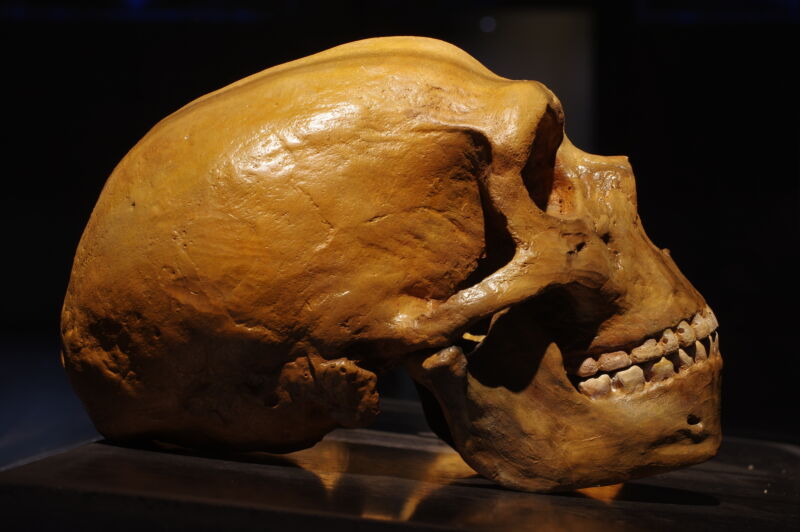
The basic outlines of interactions between modern humans and Neanderthals are now clear. Modern humans came into contact with Neanderthals when they began their great expansion out of Africa, which occurred about 60,000 years ago. Humans acquired some Neanderthal DNA through interbreeding, while waves of new arrivals swept through the Neanderthal population, which was always relatively small.
But there are some aspects of this overview that don’t quite fit the data. While it does a good job of explaining the fact that Neanderthal sequences are more common in non-African populations, it doesn’t take into account the fact that every African population we looked at has some DNA that matches Neanderthal DNA.
A study published Thursday suggests that this match occurred because a group of early humans left Africa and interbred with Neanderthals. But in this case, the result was the introduction of modern human DNA into the Neanderthal population. The study shows that this DNA accounts for a significant amount of Neanderthal genetic diversity, suggesting that their population was even smaller than previous estimates had suggested.
get out of africa early
This study is not the first to suggest that modern humans and their genes met Neanderthals long before our great expansion out of Africa. The key to understanding this lies in the genome of a Neanderthal from the Altai region of Siberia, which dates to about 120,000 years ago. That’s long before modern humans expanded out of Africa, yet its genome contains some regions that are an excellent match to the human genome but are absent from the Denisovans.
One explanation for this is that these are fragments of Neanderthal DNA that were picked up by later populations that expanded out of Africa. The problem with this view is that most of these sequences also appear in African populations. So researchers have put forward the idea that an ancestral group of modern humans left Africa about 200,000 years ago, and that some of their DNA was retained by Siberian Neanderthals. This is consistent with some fossil finds that place anatomically modern humans in the Middle East at about the same time.
But there is an alternative explanation: Some of the populations that migrated out of Africa 60,000 years ago and picked up Neanderthal DNA migrated back to Africa, taking Neanderthal DNA with them. This resulted in a small amount of Neanderthal DNA remaining in African populations.
To solve this problem, a research team from Princeton University focused on Neanderthal DNA found in Africans, taking advantage of the fact that we now have a much larger set of complete human genomes (about 2,000 genomes).
This work was based on a simple hypothesis. All the work we have done on Neanderthal DNA suggests that their population was relatively small, and therefore less genetically diverse than that of modern humans. If so, then adding modern human DNA to the Neanderthal population should have increased its genetic diversity. If so, then the fragments of Neanderthal DNA found in African populations should include some of the most diverse regions of the Neanderthal genome.

“Beer aficionado. Gamer. Alcohol fanatic. Evil food trailblazer. Avid bacon maven.”
